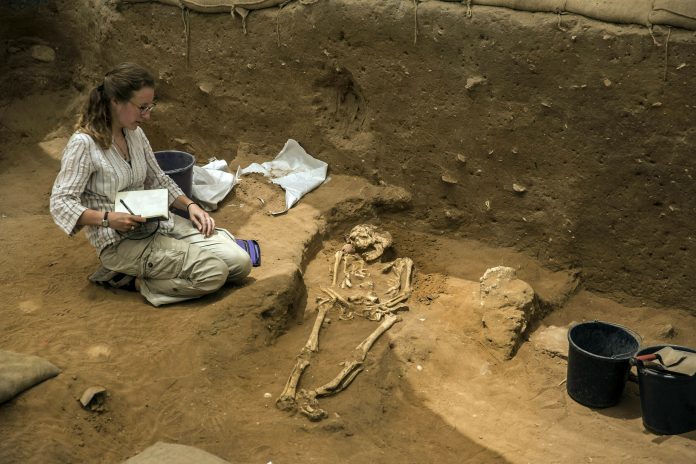
Goliath the Greek? Human remains from an ancient cemetery in southern Israel have yielded precious bits of DNA that a new study says help prove the European origin of the Philistines — the enigmatic nemeses of the biblical Israelites.
The Philistines mostly resided in five cities along the southern coast of what is today Israel and the Gaza Strip during the early Iron Age, around 3,000 years ago. In the Bible, David fought the Philistine giant Goliath in a duel, and Samson slew a thousand of their warriors with the jawbone of an ass.
Many archaeologists have proposed they migrated to the coast of the ancient Near East during a period of upheaval at the end of the Late Bronze Age, around 1200 B.C.
The Philistines emerged as other societies around the eastern Mediterranean collapsed, possibly because of a cataclysmic intersection of climate change and man-made disasters. Philistine ceramics bear similarities to styles found in the Aegean, but concrete evidence of their geographic origins has remained elusive.
Now, a study of genetic material extracted from skeletons unearthed in the Israeli coastal city of Ashkelon in 2013 has found a DNA link. It connects the Philistines to populations in southern Europe during the Bronze Age.
The study, spearheaded by researchers from Germany’s Max Planck Institute and Wheaton College in Illinois, was published Wednesday in the research journal Science Advances.
The biblical account relates that the Philistines originally hailed from a distant isle. An Egyptian temple built by Rameses III bears reliefs of battles with “Sea Peoples” who appeared on the shores of the eastern Mediterranean. One group listed in the Egyptian text is strikingly similar to the Hebrew name for Philistines. Excavations of Philistine sites have found ceramics and architecture that differed from those of their neighbors in ancient Canaan.
But archaeologists can’t be absolutely certain that different pots mean different people.
Eric Cline, an archaeologist from George Washington University specializing in the Late Bronze Age in the Near East, said conclusive evidence has eluded scientists until now — even if the material remains have indicated that the Philistines migrated to the Levant from the Aegean around 1200 B.C.
Cline, who was not involved in the study, is the author of “1177 BC: The Year Civilization Collapsed,” which examines the period when the Philistines arrived. He called the paper’s findings “extremely exciting and very important” by helping resolve the long-standing mystery about their origins.
“We were all hoping that it might be possible to get genetic information like this,” he said. “Now we have scientific confirmation from DNA that the Philistines do indeed most likely come from that region.”
The researchers looked at DNA from 10 skeletons excavated from the ancient cemetery in Ashkelon, one of the Philistine seaports.
Using Carbon-14 dating technology, three were determined to be from the centuries before the Philistines’ presumed arrival around 1200 B.C., four were from the period immediately afterward, and three dated to centuries further on, the late Iron Age.
The study found that the remains dating to the early Iron Age — the period associated with many of the stories involving Philistines in the Bible — were genetically distinct from their Levantine neighbors, and had close similarities with populations in southern Europe.
“We see in their DNA a European component from the West that appears in a substantial enough way that we can demonstrate it statistically, we can show that it’s different,” said Daniel Master, an archaeologist with Wheaton College who headed the expedition in Ashkelon. “It basically says the people came from outside, not just the style of pottery.”
He said the findings were “direct evidence” that the cultural change found in Philistine cities “reflected the migration of a group of people.”
The DNA from the later individuals found they had some southern European genes, but appeared much closer to the surrounding Canaanite population.
“There was this pulse of people coming in, and then they kind of mixed in into the local population, so a few hundred years later they are almost indistinguishable” from the surrounding Levantine gene pool, said Michal Feldman, an archeogeneticist at the Planck Institute and one of the paper’s lead authors.
The results point to a possible southern European origin for the Philistines — anywhere from Cyprus to Sardinia — but further study of ancient remains is needed to narrow down the search.
“Until we have more samples from the neighboring regions,” and from the Philistines themselves, said Feldman, “I don’t think we can pinpoint better their homeland or homelands.”q



















